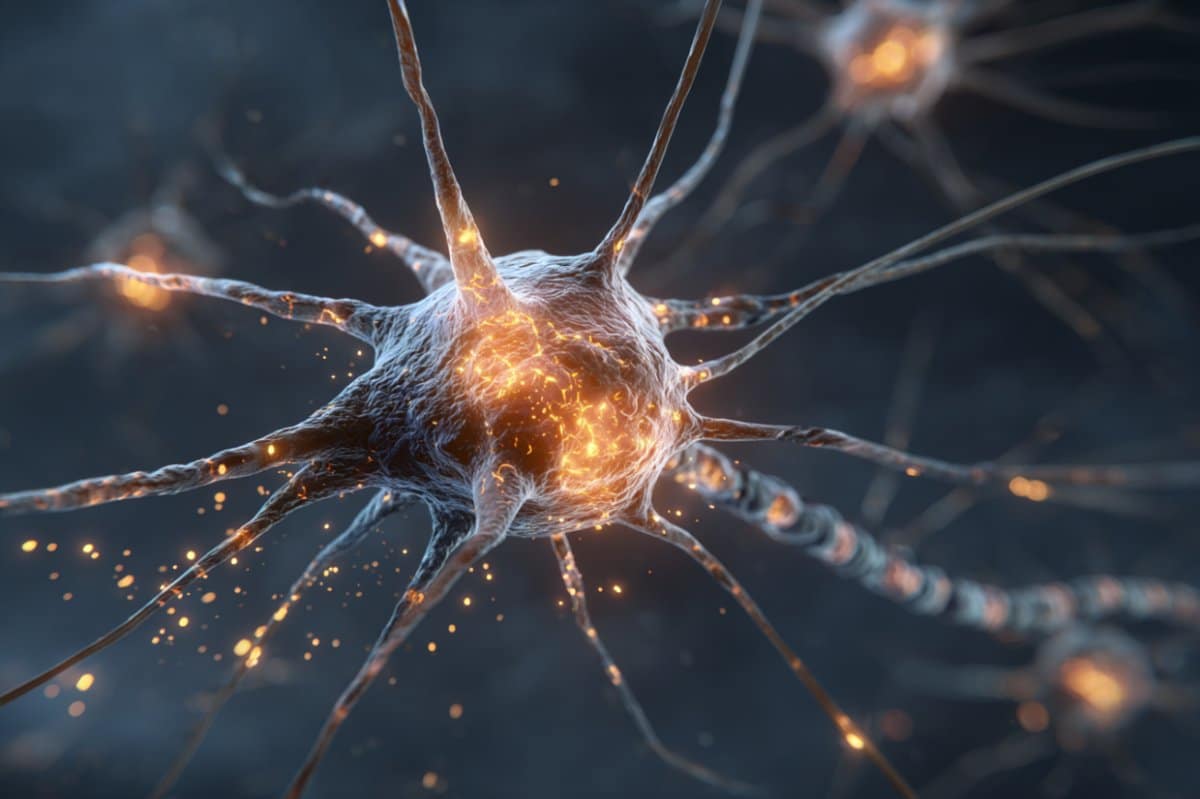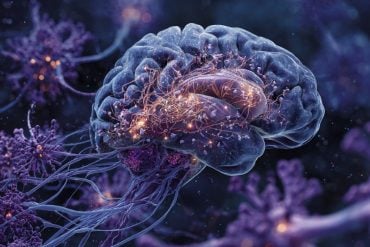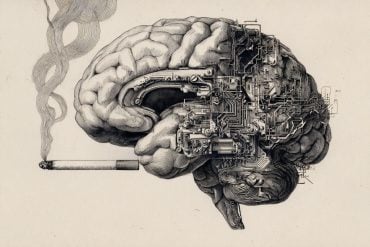Summary: New research has uncovered that neurons store their own glycogen, acting as “backup batteries” to keep the brain functioning during energy stress. Using worms and advanced biosensors, scientists found that neurons can tap into glycogen reserves, especially when oxygen or mitochondrial function is limited.
This metabolic flexibility, termed “glycogen-dependent glycolytic plasticity,” shows neurons are more self-sufficient than previously believed. The discovery could inspire new treatments for neurological diseases where energy failure is a key factor.
Key Facts:
- Neurons Store Glycogen: Contrary to long-held beliefs, neurons have their own energy reserves.
- Stress Adaptation: Neurons rely on glycogen during low oxygen or mitochondrial dysfunction.
- Clinical Potential: Findings could lead to therapies for stroke, epilepsy, and neurodegeneration.
Source: Yale
A new Yale study has revealed that neurons — the energy-hungry cells that connect and direct activity in the brain — are equipped with “backup batteries” that kick in to keep the brain running during periods of metabolic stress.
Writing in Proceedings of the National Academy of Sciences, researchers describe how neurons store their own glycogen, a form of sugar that helps neurons stay resilient when their main energy sources falter.

The findings illustrate how neuron cells can adapt their metabolism, researchers say, and could shape new treatments for neurological conditions like stroke, neurodegeneration, and epilepsy, all disorders in which energy failure plays a role.
“Traditionally, it was believed that glial cells served as ‘energy warehouses,’ storing glycogen and supplying neurons with fuel as needed,” said co-lead author Milind Singh, a doctoral student in cell biology at the Yale School of Medicine (YSM).
“But we now know that neurons themselves store glycogen and can break it down when the pressure is on. It’s like discovering that your car is a hybrid — it’s not just reliant on gas stations, it’s been carrying an emergency battery the whole time.”
For the study, the research team used a microscopic roundworm called Caenorhabditis elegans(C. elegans) — a type of worm commonly used in research — and a genetically encoded fluorescent biosensor called HYlight, which glows in response to changes in glycolysis (the process cells use to break down sugar for energy.)
With custom-built devices, researchers precisely controlled the level of oxygen the living worms experienced and monitored how neurons responded to energy stress in real time.
A breakthrough came when researchers discovered the enzyme PYGL-1, the worm’s version of the human glycogen phosphorylase enzyme that converts glycogen into fuel for neurons.
When researchers removed PYGL-1, the worm neurons could no longer ramp up energy during low-oxygen stress conditions; when the enzyme was specifically restored in neurons, that failure was reversed.
“We discovered that neurons use two different strategies to adapt to energy stress: one that’s glycogen-dependent, and one that isn’t,” explained co-lead author Aaron Wolfe, a postdoctoral neuroscience researcher.
“The glycogen-dependent pathway is particularly critical when the mitochondria — one of the cell’s primary energy producers — aren’t functioning well. In those situations, glycogen serves as a backup system to provide energy via glycolysis.”
The team coined the term “glycogen-dependent glycolytic plasticity” (GDGP) to describe this phenomenon. They found that GDGP is especially important when mitochondrial function is compromised — such as during hypoxia, a condition of limited oxygen supply.
Under these conditions, glycogen serves as a low-cost, rapid-access fuel source, helping neurons stay active when other systems might stall. This metabolic adaptability, known as “glycolytic plasticity,” helps neurons maintain their core functions under stress.
“Our work challenges the textbook model of how the brain fuels itself. Neurons are more self-sufficient than we thought,” Singh said.
Co-author Daniel Colón-Ramos, the Dorys McConnell Duberg Professor of Neuroscience and Cell Biology at YSM, said the study supports the notion of glycogen as an “energy capacitor” in neurons.
“Just like in muscles, this reserve can buffer rapid shifts in energy demand,” Colón-Ramos said.
“That flexibility might be crucial for how the brain maintains function and responds to stress.This research reshapes our understanding of brain energy metabolism and opens new avenues for exploring how to protect and support neuronal function in disease.”
Other authors, all from Yale, include Sarah Emerson, a postdoctoral researcher in neuroscience; Ian J. Gonzalez, a graduate student in cell biology; Anjali A. Vishwanath and Anastasia Tsives, post-doctoral researchers in neuroscience; and Richard Goodman, a research scientist in neuroscience.
About this neuroscience research news
Author: Bess Connolly
Source: Yale
Contact: Bess Connolly – Yale
Image: The image is credited to Neuroscience News
Original Research: Open access.
“Glycogen supports glycolytic plasticity in neurons” by Milind Singh et al. PNAS
Abstract
Glycogen supports glycolytic plasticity in neurons
Glycogen is the largest energy reserve in the brain, but the specific role of glycogen in supporting neuronal energy metabolism in vivo is not well understood.
We established a system in Caenorhabditis elegans to dynamically probe glycolytic states in single cells of living animals via the use of the glycolytic sensor HYlight and determined that neurons can dynamically regulate glycolysis in response to activity or transient hypoxia.
We performed an RNAi screen and identified that PYGL-1, an ortholog of the human glycogen phosphorylase, is required in neurons for glycolytic plasticity.
We determined that neurons employ at least two mechanisms of glycolytic plasticity: glycogen-dependent glycolytic plasticity (GDGP) and glycogen-independent glycolytic plasticity. We uncover that GDGP is employed under conditions of mitochondrial dysfunction, such as transient hypoxia or in mutants for mitochondrial function.
We find that the loss of GDGP impairs glycolytic plasticity and is associated with defects in synaptic vesicle recycling during hypoxia.
Together, our study reveals that, in vivo, neurons can directly use glycogen as a fuel source to sustain glycolytic plasticity and synaptic function.






